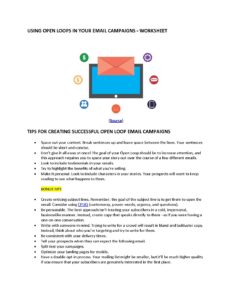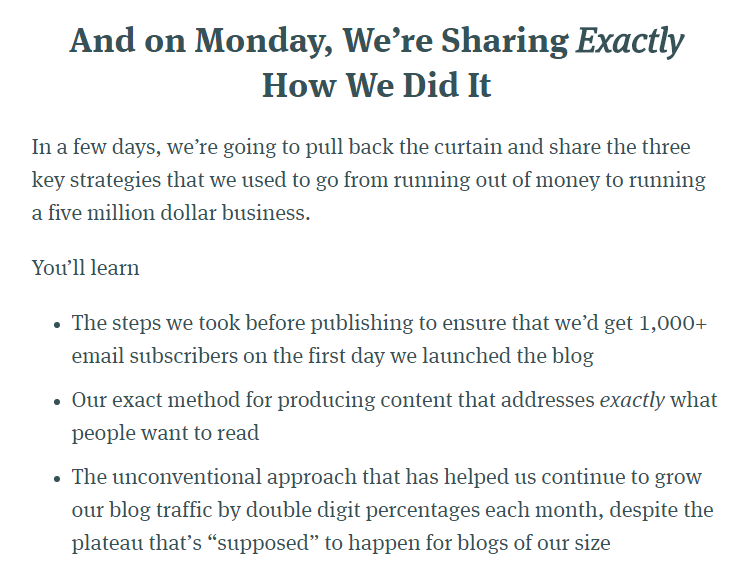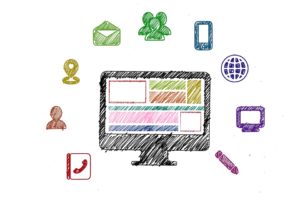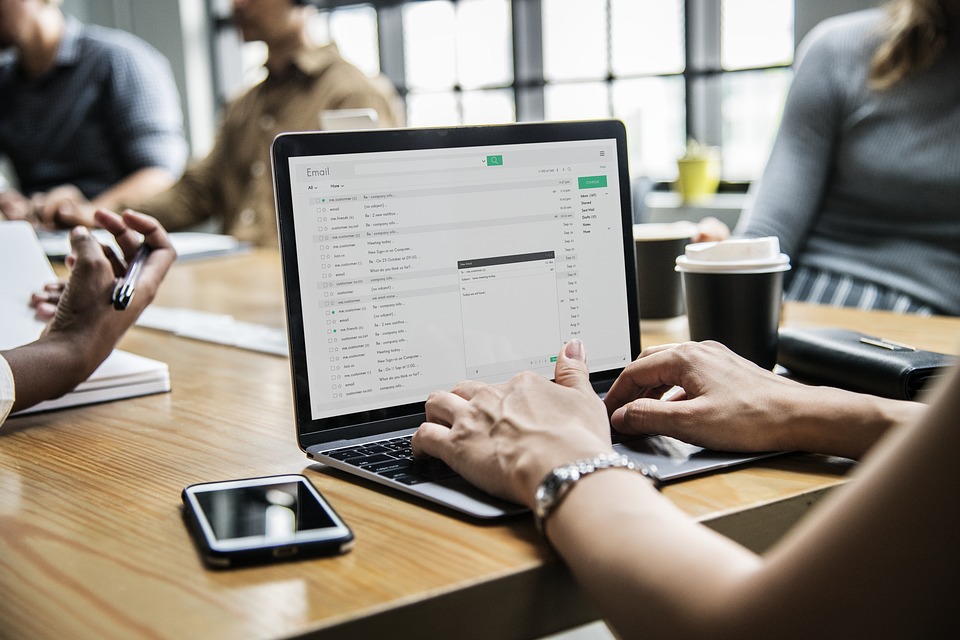As an e-commerce store owner or marketer, you know the value of a good, solid email campaign.
Most successful marketers recognize that email marketing is still one of the best marketing tools available today. For ten years in a row running, email has consistently been the channel that generates one of the highest ROIs for marketers –for every $1 spent; it generates $38 in return.
But as is often the case, not all email campaigns are created equal. Not only do you have a range of different approaches for email campaigns –from informational emails to newsletters, but these campaigns vary across the board in terms of their effectiveness.
For this reason, you’ll want to put extra effort into ensuring that the campaigns you’re creating are ones that will be effective.
Email newsletters are one form of email marketing that can yield especially good results. Far from simply serving as an office circular or a humblebrag on what achievements your company is making, a newsletter, when done right, has the power to grip your audience, and draw them in.
It’s a great opportunity to reach your target market; and oftentimes those who may be lower in the sales funnel, having already expressed interest in your product by signing up to your newsletter in the first place.
Introducing Open Loops Into Your Email Campaigns
But like we’ve seen before, simply writing up a newsletter and firing it off isn’t likely to be a winning strategy. Instead, you need a way of ensuring that your newsletter connects with your audience, gets their attention, and captures their interest. Tall order!
Introducing: Open Loops –an invaluable yet often-overlooked tool that you have at your disposal when creating email newsletters.
Simply put, an Open Loop is a way of “creating anticipation for what’s to come.” It’s a technique that’s used in trailers and most TV shows, and is quite possibly the reason that so many keep tuning into shows like Game of Thrones and The Walking Dead.
For marketers, an Open Loop is an incredibly valuable concept. Good storytelling, after all, is timeless and it appeals to our need to connect, communicate, and learn more.
As a marketer, the concept of creating a physical need to consume more information is extremely attractive, but it can be difficult to get it right. How do you walk the line between creating enough suspense to intrigue your audience, without annoying or frustrating them?
If you’d like to master the art of using Open Loops in your marketing efforts, then this article’s for you.
In this guide, I’ll show you how you can incorporate Open Loops into your emails, and create content that’ll keep your audience coming back for more.
Where Can You Use Open Loops?
First, let’s get clear on one thing: the concept of an Open Loop can be used almost anywhere that you’re speaking to prospects. This includes, but isn’t limited to the following:
- Email Campaigns
- Blog Posts
- Website Content
- Social Media Posts
- Webinars
- Videos
- Product Launches
- Podcasts
And more!
In this article, we’ll focus primarily on using Open Loops in email campaigns, but the concept is interchangeable, and could easily be applied to other mediums as well.
Why Do Open Loops Work?
Now, let’s take a look at why, exactly, Open Loops work.
Simply put, our brains are wired for closure. We need to tie up loose ends!
This effect is known as the Zeigarnik effect –which states that people remember incomplete tasks better than completed ones. Psychologist Bluma Zeigarnik began studying this phenomenon after noticing that waiters often seemed to remember orders –even without writing them down, but only so long as the order was still out. After it was served, though, they would soon forget who ordered what.
This effect can be applied to stories, TV shows, and even marketing emails as well. When we see a show that has a cliffhanger or read an email that’s ‘to be continued’ our brains can’t help but focus on the potential ending –we just have to find out what happens next. This is why when we sit down to watch just one episode; we usually end up watching three or four.
As a marketer, you can use this Hollywood storytelling technique in your own emails, drip-feeding your audience a little at a time to keep them interested.

“NEVER give away all the information at once,” advises Laura Walsh of digital marketing and website design company Keystone Click. “If you do, you might never hear from your audience again.”
Instead, marketers should look to create cliffhangers, or an Open Loop to draw readers in by presenting the problem and then teasing the answer in a way that’ll make them want to click –or tune in next time.
When your prospect sees the final outcome, the loop closes and the tension is released. But by keeping the loop open, the curiosity will be open as well, and your prospects won’t be able to help but think about potential endings. “And living in the subconscious mind of your prospects,” says sales funnel specialist Jeremy Reeves, “is never a bad thing.”
For email campaigns, implementing Open Loops means looking to add a sense of intrigue to your content. The best way to do this is by weaving a story into your letter. Start out with a personal anecdote, one that’ll allow your reader to connect with you in a real way. Then, lead into something that’s exciting; something that will keep your reader on the edge of their seat and make them want to learn more.

Get our Using Open Loops in Your Email Campaigns Worksheet delivered right to your inbox.
Finish up by leaving the ending open, such as “Tomorrow I’ll cover that,” or “I’ll show you how I did it next time.” Anything that’ll allow you to add a sense of intrigue to the email, and keep your readers interested enough to learn more.
In a way, you can think of this as your own TV show. Leave the loop open, and encourage them to check their next email to see what happens.
You can leave a day or two in between emails, but don’t leave it too long –or your audience will quickly go from intrigued to frustrated! One or two days in between emails are usually ideal.
For an excellent example of creating an Open Loop campaign with a series of blog posts, take a look at Groove’s article, The Story We Haven’t Shared: How Our Startup Almost Died.
Groove began their Open Loop with the headline, and kept the suspense up throughout the article. At the end, they left on a cliffhanger, which makes you want to tune in next time to see what happened.

For an email marketing campaign, you could apply a similar approach. By creating a story and breaking it down into a series of emails, you can create a campaign that will intrigue your readers and pique their interest. You’ll be able to encourage them to look out for your following emails to see how the story ends.
To show you what I mean, here’s another example of how an Open Loop email would read:
“Last Friday started out the same as any other day, but ended in a way that I couldn’t have ever imagined.
It was last Friday that I met up with Peter –an old friend that I hadn’t seen for years. We exchanged pleasantries and small talk until he suddenly said something that stopped me in my tracks and made me question everything I’d thought I’d known about him up until that point.
It was a revelation that left me shocked and stunned. Like when you get the wind knocked out of you…
It changed my life, and I’m confident that it will change yours as well…”
As you can see, the example has intrigue, it’s personal, and you want to read more next time to find out what Peter said.
Tips for Creating Open Loop Emails

When it comes to creating successful Open Loop campaigns, keep in mind that style, and how you present your message can have a big impact on how well it’s received.
With this in mind, here’s a look at a few practical tips for creating Open Loop emails:
- Space out your content. Break sentences up and leave space between the lines. Your sentences should be short and concise.
- Don’t give it all away at once! The goal of your Open Loop should be to increase attention, and this approach requires you to space your story out over the course of a few different emails.
- Look to include testimonials in your emails.
- Try to highlight the benefits of what you’re selling.
- Make it personal. Look to include characters in your stories. Your prospects will want to keep reading to see what happens to them.
Note: More tips included in the free download!
While it can be a bit of a challenge, writing in this style, with some practice, you’ll soon become adept at creating Open Loop emails.
At the end of the day, Open Loops can be a tremendously beneficial way to create content that’ll resonate with and intrigue your audience. And it’s an approach that’s worth taking. After all, there’s a lot that you stand to gain by writing these types of emails, namely the chance to hang out rent-free in your prospect’s mind –and that’s never a bad thing!
Have you tried using Open Loops in your email campaigns or marketing efforts? How did it go?

Get our Using Open Loops in Your Email Campaigns Worksheet delivered right to your inbox.








1 thought on “Using Open Loops in Your Email Campaigns”